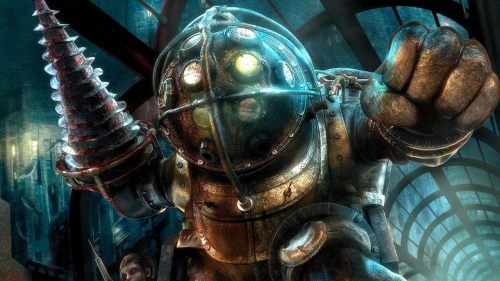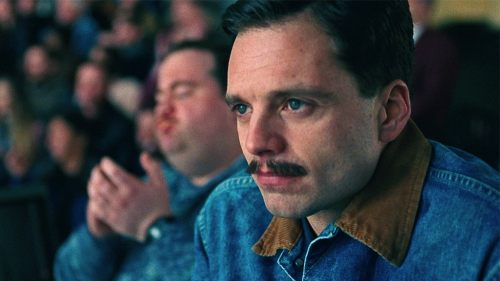The Haunted History Behind Gore Verbinski’s CURE FOR WELLNESS Castle
While many big budget Hollywood movies opt to build a set within the safe confines of a studio lot (or implement a setting with green screen/CGI), director Gore Verbinski’s set is over one hundred years in the making. Covered in sickly vines, rotting from the inside out, sticky with spray paint from vagrants, and bearing a dark past -- the Beelitz-Heilstatten, a.k.a. the Beelitz Sanatorium in Brandenberg, Germany, is one of the most haunted buildings in all of Deutschland, making it the perfect shooting location for Verbinski’s eerie medical center movie, A Cure For Wellness.
In the film, a startlingly young Wall Street executive named Lockhart is blackmailed by his company into traveling to a wellness center in Switzerland to retrieve the firm’s CEO, Pembroke, who has seemingly gone off the rails since he started his stay at the renowned facility. Although he’s never been one to slow down, once he’s inside of the hospital walls, Lockhart begins to notice for the first time a sort of sickness growing inside of him. With dark circles under his eyes, an addiction to cigarettes that he just can’t seem to kick, and an inability to connect to anyone (even his mother) on an emotional level, Lockhart looks around at all of the carefree patients of this institute with envy. He originally planned to come here, grab the looney CEO, and head back to New York on the red eye flight home. However, with Pembroke refusing to leave, Doctor Volmer’s insistence that Lockhart is not a well man, and his recent car crash that landed him in a boot, Lockhart reluctantly agrees to begin treatment. As Lockhart drinks the water the institute keeps trying to shove down his throat, he begins to question everything he ever knew. Is he unwell? What does being well mean? Does it mean having the respect of your fellow coworkers? Having a large salary? Or is it possible that true happiness can only come from within, and that Lockhart has literally been working himself to death? One thing’s for sure: A Cure For Wellness relies heavily on beautifully harrowing aesthetics, and the interiors taken from the sanatorium play a big role in that.
Built between 1898 and 1930, the Beelitz Sanatorium has a dark and foreboding history, and one that lends a wicked ghost town air of mystery to nearly every scene in Verbinski’s latest medical thriller. Originally created to care for tuberculosis patients, the scene became covered in blood long before the Furher himself stepped onto the premises. Constructed specifically in this particular location for its closeness to Berlin and for the comely scenery of the tree laden countryside, the German National Insurance Institute found this calming place in the woods to be the perfect place to erect their sanatorium.
A massive structure, this sixty-building complex acted more as its own little village than a single medical center. The place had its own bakery, post office, power station, and butcher, making it an ideal stay for soldiers during World War I, when part of the edifice was turned into a military hospital by the German Imperial Army. It was around this time that the complex received its first noteworthy visit from an unknown soldier, who would go on to become one of the world’s most infamous and feared leaders: Mr. Adolf Hitler. Since the sanatorium began to take in and house German soldiers injured during The Great War, little Adolf found himself to be a patient in 1916 after he hurt his leg during the Battle of Somme as a result of a shell blast; an injury which was excruciatingly painful, but one that also earned him the Iron Cross. Hitler spent almost two whole months in the infirmary, and grew to like it so much that he actually wrote about it in his book Mein Kampf. Eventually, Hitler recovered and returned to the ranks, but he was shortly thereafter injured again when he was briefly blinded by mustard gas. Hitler landed in a different clinic this time, but his short stint at Beelitz gave the place the not so cute nickname of “Hitler’s Hospital”, a name which would live on even until this very day.
Hitler is probably the most well known dictator to have spent some time at the sanatorium, but he’s not the only one to make an appearance. In 1990 German Democratic Republic leader Erich Honecker became a patient, where he received cancer treatment. Following the fall of East Germany, Honecker needed a place to crash as he strove to escape to Russia and avoid prosecution after he was deposed. He found the sanatorium to be the perfect fit.
Before Honecker found himself using the joint for his own personal gain, it became a sanctuary for wounded Nazi soldiers during the second World War. Hitler never made another appearance in the hospital, but many of the men who followed in his footsteps sure did. Its impossible to be sure how many men passed away on the premises, but many people today swear that the massive building is haunted with the ghosts of Nazi soldiers, just itching to inflict some pain on anyone who happens to cross their path at the wrong time.
Partially ruined by bombs dropped by the Allied Forces during WWII, the site became occupied by Soviet Forces in 1945, and stayed a Soviet hospital for several years, even after Germany united in 1990. They ultimately withdrew around 1995, and many tried to privatize Beelitz, but to no avail. Eventually, the surrounding forest reclaimed the property, as the low hanging trees and mossy greenery came to coat the exterior walls of the sanctum, giving it a spooky, possessed feel that would come to characterize the decrepit location, and incite a challenge to all those who dared to dream of stepping foot onto the abandoned property.
The look and feel of the rundown area made it an ideal spot for photographers seeking ghostly vibes for a shoot, but unfortunately, one of the snappers that clinic attracted in had ulterior motives other than nabbing some great shots. In 2008 the despicable photojournalist Michael K. took Anja P., a young model at the time, to the abandoned operating theatre, where he claimed they could create some truly magical photos. Instead, he beat the young up-and-comer to death with a frying pan, assaulted her lifeless corpse, and left her to lie with the spirits of thousands of deceased soldiers, as she became just another wraith in the already overcrowded sanatorium that now only housed the dead.
This memory is indeed disturbing, but it's far from the most gruesome act that happened within the darkened, discolored walls. It was here that Wolfgang Schmidt earned his title as “Die Bestie von Beelitz”, a.k.a. “The Beast of Beelitz”, when his serial killer tendencies led him to lure in several local women, whom he would strangle or gag with women’s undergarments – in particular, ladies’ pink panties. Fortunately, the killer was eventually caught and sentenced, but the memory of what he had done, and the innocent lives he stole will forever live on as a maleficent presence in the sanatorium, a place so riddled with death and unfortunate history that its beauty is forced to walk hand in hand with a palpable feeling of imminent doom.
Just as the sanatorium is a place that originally claimed this certain spot of land for its serene surroundings, then turned out to become a place of horror and mayhem, so, too, does the location act as a welcoming place to heal when Lockhart first strolls through the entrance in A Cure For Wellness, until he slowly starts to realize that something more sinister is at play behind these secretive closed doors. The hospital not only provides stunning visuals for Verbinski’s delightfully strange medical mystery, but the history of the haunted clinic also lends itself tremendously to the narrative, creating a setting that’s so important that the sanatorium itself just feels like another character within the already warped story.
A proper filming location can make or break a movie, and luckily for A Cure For Wellness, the ashen interiors give the tale a much needed extra layer of depth that plays in favor of both the storyteller and the actors whose performances are wholly informed by the devilishly strange premises, as they wander through the plagued halls and are better able to slip into their characters. The location may have come to characterize Verbinski’s efforts perfectly, but it’s not the only cinematic body of work that has used the area for filming purposes. In 2008 the Tom Cruise led Valkyrie shot here, and in 2002, Roman Polanski used the location to help film his Oscar winning movie The Pianist. Even the band Rammstein seized the opportunity to shoot at the haunted location, as they used the hospital for their music video “Mein Herz brennt”.
With an abandoned psych ward, a left behind rifle range, and a cleared out surgery quarter, it’s likely that this cadaverous infrastructure will be employed in the future for other filming projects. In the meantime, the unclaimed area, which is apparently shockingly easy to get into, serves as a great tourist location for those who are bold enough to hold revel with the many phantoms who occupy the dilapidated grounds. If you ever find yourself in Germany looking for a location to visit that’s somewhat off the grid, do yourself a favor and make sure to stop by, but do your best not to disturb the dead, lest you be terrorized by one of the angry apparitions, hounded by the horrific Nazi spirits, or dragged down into Hell itself by the infamous Beast of Beelitz.



